An American Romance

Brief Synopsis
Cast & Crew
King Vidor
Brian Donlevy
Ann Richards
Walter Abel
John Qualen
Horace Mcnally
Film Details
Technical Specs

Synopsis
In 1898, immediately after disembarking at New York's Ellis Island, Czech-born Stefan Dangosbiblichek is marked for deportation because he doesn't have enough money to pay the entrance fee. When he realizes that he is about to be shipped back, Steve starts to protest loudly in Czech and convinces a sympathetic interpreter to sign his entrance papers. The nearly penniless Steve then walks from New York to the Mesabi Range in northeast Minnesota, where his cousin, Anton Dubechek, works in an iron ore mine. After the cousins happily reunite, Anton gets Steve a job as a miner and gives him tips on how to act and talk like an American. Now known as Steve Dangos, the ambitious immigrant then asks Anna O'Rourke, the local schoolteacher, to teach him how to read so that he can learn about the iron and steel industry. Steve and Anna soon fall in love, and during the warm months, while the miners dig ore above ground, Steve teaches himself how to operate a steam shovel. Later, when Steve offers to work indefinitely in the Mesabi mines to be near her, Anna reminds him of his ambitions and encourages him to seek his fortune elsewhere. The following autumn, Steve leaves Mesabi for Chicago and tricks his way into a job at a steel mill. Although he is quickly promoted to section foreman, Steve misses Anna and is depressed. He writes to her, asking her to come to Chicago, and to his delight, she appears on the next boat. Once married, Steve and Anna move into a modest but attractive house that Steve has bought, and soon become the parents of a baby girl named Tina. Over the next several years, Steve receives many promotions at the steel mill, and his family expands to include four sons--George Washington, Thomas Jefferson, Abraham Lincoln and Theodore Roosevelt Dangos. In 1917, the Dangos family attends George's high school graduation and proudly listen as he delivers a moving valedictorian speech. Soon after, Tina prepares to marry her childhood sweetheart, and George announces to Steve that he is enlisting in the Army. Before leaving, George makes his father promise he will take the U.S. citizenship test during his absence. On the day of the test, Steve and Anna are notified of George's death, and although grief-stricken, Steve goes through with the test and earns his citizenship. Later, Howard Clinton, one of George's teachers, drops by the Dangos house to give Steve some poems that George had written for his class. Touched by the gesture, Steve, who has dismantled and reassembled the family car in an attempt to improve it, offers to take Howard for a ride. Steve's "adjustments" to the car enable it to go eighty miles an hour, and the two are arrested for speeding. While in jail, Howard, who is also a car "buff," suggests that he and Steve race the car at Indianapolis. Although they crash during the race, their experience gives them the idea to start their own auto company and build safer, faster cars. Anna accepts the move to Detroit without complaint, and the Danton Auto Works is soon opened with Steve and Howard's savings. Using his knowledge of mechanics and steel production, Steve then undertakes to design a car with a steel top and a suspension-mounted engine. After a rough prototype is completed, Steve demonstrates the car to a representative of a large manufacturing company, who then presents the design to the company's board of directors. The board offers to buy the innovative design, but declare that the company will not put the car into production until forced to do so by the competition. Disgusted by the board's attitude, Steve refuses to sell the design, then convinces his devoted staff to build a polished prototype for an upcoming New York auto show in exchange for a partnership in the company. At that moment, Anton shows up at the factory and offers to invest his entire savings in the project. The car is the hit of the auto show, and Howard gleefully informs Steve that various investors have offered five million dollars to manufacture it. Sometime later, college-educated Teddy, who wants to learn the auto industry from "the ground up," takes a low-level job at the company. Although thrilled to have his youngest at Danton, Steve becomes distressed when Teddy gets involved in a campaign to organize the workers. Maintaining that he has always taken good care of his employees, Steve is unsympathetic when they go on strike. During a meeting between a workers' group and Danton's board of directors, Teddy, Anton and Howard all vote to allow the workers to organize, and the defeated Steve condemns them as traitors. Anna then suggests that Steve retire and travel, and the couple eventually settles in California. Just after the bombing of Pearl Harbor, Steve, who has become bored and listless, learns that the government has asked Danton to build airplanes in San Diego. Putting aside his pride, Steve reconciles with Teddy, Howard and Anton, and together they figure out ways to increase Danton's productivity and turn out thousands of airplanes for the war effort.

Director

King Vidor
Cast

Brian Donlevy

Ann Richards

Walter Abel

John Qualen

Horace Mcnally
Mary Mcleod
Bob Lowell
Fred Brady
Billy Lechner
Jerry Shane
Harold Landon

J. M. Kerrigan
Erville Alderson
Robert Middlemass

Howard Freeman

Roy Gordon
Bobby Rich
Richard Hall
Bobby Winkler

Jackie Jenkins
Andrew Warrocks
Carol Combs
Richard Hirsch
Charles Bates
Jimmy Griffin
Bobby Larsen
Drew Roddy
Bryn Davis
Preston Peterson
Axel Anderson
Molio Sheron
Edward Hearn
Art Berry Sr.
D. H. Turner
Alex Davidoff
Rudolph Myzet
Michael Visaroff
Wacklaw Reckwart
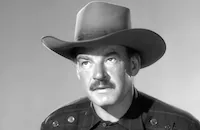
Ray Teal

Kay Medford
Charles Wagenheim
Rita Gould
Robert E. O'connor
Art Belasco
Ed O'neill
Bill Borzage
Ed Hennerty
Dick Wessel
George Meader
Dell Henderson
Leon Warwick
Marty Faust
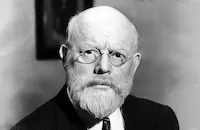
Howard Mitchell
John Sheehan
George Bunny
William Haade
Mitchell Lewis
Nolan Leary
Frank Faylen

Barbara Pepper
Richard Ryen
Greta Meyer
Leon Belasco
Ilka Gruning
June Terry Pickrell

Charles Irwin
Jerry O'neil
Paul Porcasi
Jack George
Anna Marie Biggs

Byron Foulger
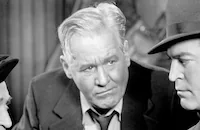
Joseph Crehan
Tom Martin
Eddie Waller
Ben Hall
Jack Mulhall
Ernie Adams
Dick Elliott
William Tannen
Norman Nesbitt
Phyllis Kennedy
Johnny Walsh
Ethan Laidlaw
Harry Semels
Larry Grenier
George Magrill
John Merton
Duke York
Noreen Roth
Billy Engle
John Bohn
Charles Regan
Bob Thom
Ed Mortimer
Bert Howard
James Carlisle
Snub Pollard
Paul Gordon
George Sherwood
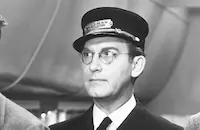
Emmet Vogan
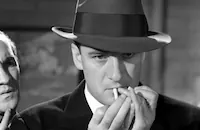
Elliott Sullivan

Harry Cording
Jimmie Dodd
Ivan Miller

Lee Phelps
Earle Hodgins
Pat O'malley
Tom Chatterton
Crew
William Beatty
Sir Henry Rowley Bishop
Charles Boyle
A. W. Brown
Malcolm Brown
Walter Brown
Alvis Campbell
James Carmichael
Ford Clark
John Cooney
Adolph Crautsh
Herbert Dalmas
Jack Dawn
Greg Dickson
John Dullam
Thomas Edwards
Byron Ellerbrock
Byron Fitzpatrick
Cedric Gibbons
Arnold Gillespie
Louis Gruenberg
Russell Haverick
Henry Inius
Irene
Lloyd Isabell
Henri Jaffa
Al Jennings
Natalie Kalmus
William Keily
Albert Kelley
Edward Lawrence
Frank Leonetti
Ben Libizer
Bill Linahan
William Ludwig
Jack Mackenzie
Bob Martin
Urie Mccleary
James Minette
Conrad A. Nervig
Ray O'brien
Richard Pefferle
Ted Raymond
Harold Rosson
Harold Saunders
Hal Sausser
Tolliver Scheffield
William Shakespeare
Douglas Shearer
Nathaniel Shilkret
Bert Spurlin
Walter Strohm
John Venclik
King Vidor
King Vidor
King Vidor
Wally Whittington
Edwin B. Willis

Film Details
Technical Specs

Articles
An American Romance
The personal side of An American Romance focuses on Stefan Dangos (Brian Donlevy), an eager Czech immigrant who arrives in the New World shortly after the turn of the century and makes his name in the steel industry. Despite his sympathy for his workers, Dangos resists their efforts to form a union. When a strike forces Dangos' company to accede to the workers' wishes, he retires from his business -- but returns in the World War II era to oversee the production of bombers necessary for America's victory.
Vidor had envisioned Spencer Tracy in the role eventually played by Donlevy, but An American Romance was so long in pre-production that Tracy moved on to other projects. Ingrid Bergman -- Vidor's first choice to play the immigrant's wife -- was similarly unavailable, and the role went to Ann Richards, an MGM contract player from Australia. Further complications arose due to the fact that no passenger car assembly lines were in operation during the war. Vidor's workmen were forced to borrow new cars from the Chrysler Company, disassemble them and then put the parts back together in a simulated assembly line. The aircraft assembly line was first built and photographed in miniature, but looked so unreal that this episode had to be reshot in an actual factory.
Vidor recalled that, when his epic was previewed, MGM studio head Louis B. Mayer "put his arm around my shoulders and said, "I've just seen the greatest picture our company has ever made. " However, the studio later ordered extensive re-editing that Vidor felt emphasized the technological side of the story at the expense of the personal drama. Perhaps because Donlevy and Richards had so little box-office luster, An American Romance never reached the audience Vidor felt it deserved. The director's disappointment was so severe that he packed up all of his belongings and moved out of his office at MGM.
Producer/Director: King Vidor
Screenplay: Herbert Dalmas, William Ludwig, from story by King Vidor
Cinematography: Harold Rosson
Art Direction: Cedric Gibbons
Original Music: Louis Gruenberg
Editing: Conrad A. Nervig
Costume Design: Irene
Principal Cast: Brian Donlevy (Stefan Dangos), Ann Richards (Anna O'Rourke), Walter Abel (Howard Clinton), John Qualen (Anton Dubechek), Horace (Stephen) McNally (Theodore Roosevelt "Teddy" Dangos).
BW-121m. Closed captioning.
by Roger Fristoe
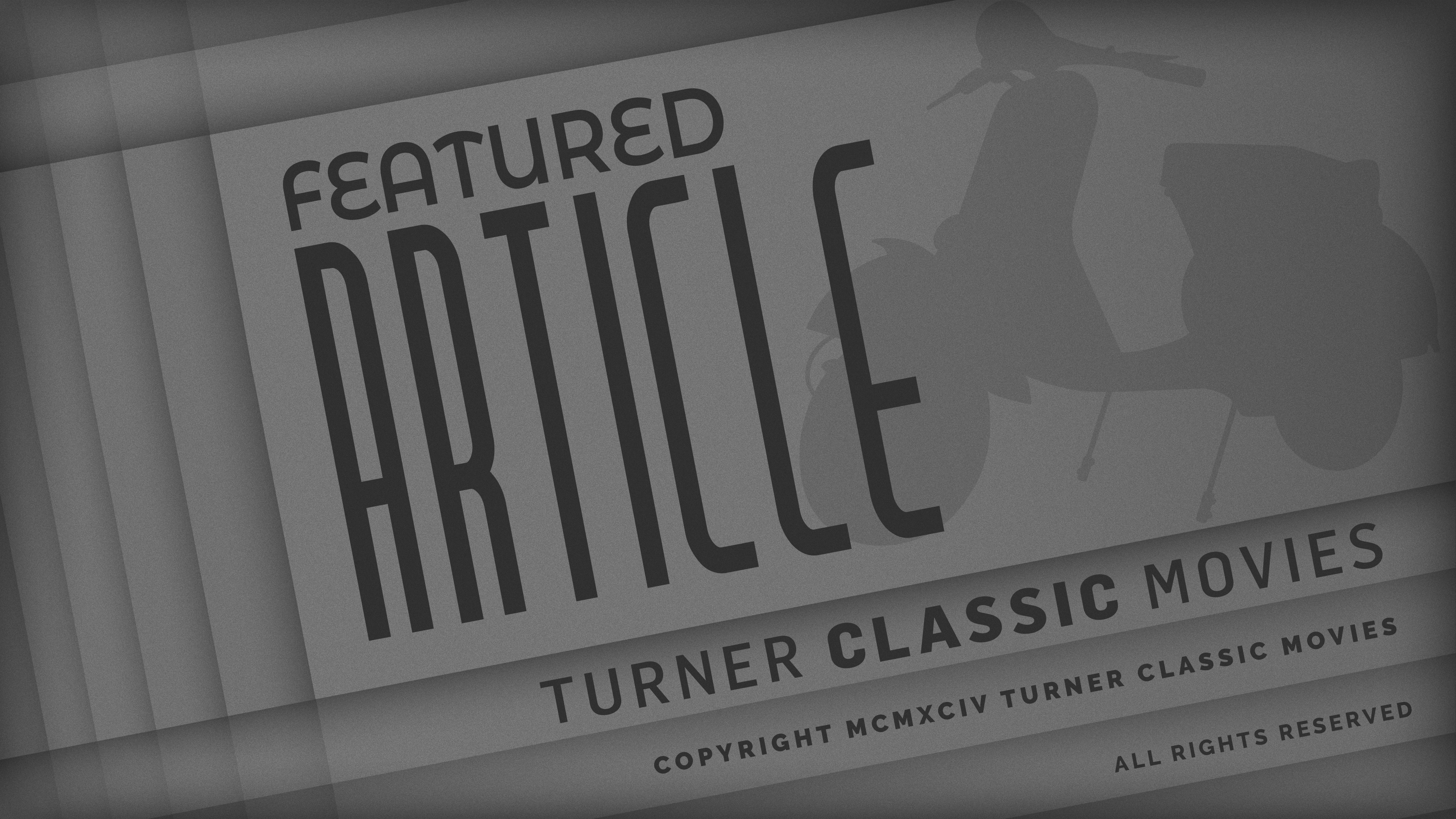
An American Romance
Quotes
Trivia
Notes
The working titles of this film were America, American Miracle, The Magic Land, This Is America and An American Story. According to modern sources, Man of Tomorrow was also a working title. The character of "Teddy Dangos," as played by Horace McNally, provides intermittent offscreen narration throughout the film. The picture also includes several documentary sequences depicting the manufacture of steel, cars and planes. According to a late October 1944 Hollywood Reporter news item, the film was cut from 151 to 122 minutes after exhibitors complained about its length. It is possible that some of the above-listed actors were cut out for the shortened version. According to records in the M-G-M Music Collection, the hymn "Lord Please Send Down Your Love" was performed in the film by black singer Leon Warrick. Warrick is also listed in the CBCS, but the song was not heard in the viewed print and was apparently cut for the shortened version. (Modern sources note that director-producer King Vidor wrote the song's lyrics.)
In his autobiography, Vidor related that he conceived of An American Romance, a picture that took him three years to complete, as the final part of his self-proclaimed "war, wheat, and steel" trilogy. "War" was represented by Vidor's 1925 epic The Big Parade (see AFI Catalog of Feature Films, 1921-30; F2.0405), and "wheat" by the 1934 independent production Our Daily Bread (see AFI Catalog of Feature Films, 1931-40; F3.3296). Vidor adds that at the time of the film's inception, he was considering joining the Army Air Corps motion-picture division, but finally concluded that making An American Romance, with its "arsenal-of-democracy" theme, would be the most effective way to serve his country.
In a modern interview, Vidor stated that he got the film's basic story line from a series of stories and recollections by Yugoslavian-born Louis Adamic, who had worked in the Minnesota iron ore mines around the turn-of-the-century. Vidor was also influenced by the lives of American industrialists Andrew Carnegie, Charles Steinmetz, William Knudsen and Walter Chrysler, according to his autobiography. According to a modern source, in 1941, Vidor wrote a three-page outline for the film and sent it to Adamic, who then wrote the first few sequences of the picture. Hollywood Reporter announced in March 1942 that Adamic was collaborating on the script with Vidor. Adamic's contribution to the completed film, if any, has not been confirmed, however. In the modern interview, Vidor stated that he used the town of Hibbing, MN, as the model for his screen town, although Hibbing was not specifically mentioned in the film. Modern sources note that from July 1941 to April 1942, many writers, including Norman Foster, John Fante, James Hill, Tom Treanor, Wessel Smitter, Ross B. Wills and Renata Oppenheimer, worked on drafts of the film's treatment. Smitter, Gordon Kahn, Frances Marion and Vincent Lawrence made minor contributions to the screenplay, which Vidor initially co-wrote with credited scenarist Herbert Dalmas. In April 1943, credited writer William Ludwig worked on a full rewrite of the script with Dalmas and Vidor. Robert D. Andrews contributed dialogue to the added scenes, which were shot in November 1943, according to modern sources.
According to the modern interview, Vidor pitched the story of An American Romance directly to M-G-M vice-president and general manager Louis B. Mayer, who in turn told the story to M-G-M president Nicholas Schenck, who then gave the final go-ahead. Spencer Tracy was Vidor's first choice to play "Steve Dangos" and was announced as the film's star in August 1942. In his autobiography, Vidor comments that Tracy symbolized "all that the character of Stephan Danahos [sic] stood for." Because of scheduling conflicts, Vidor was forced to replace Tracy with Brian Donlevy. Vidor noted in the modern interview that he had hoped to cast Ingrid Bergman as Steve's wife and Joseph Cotten as "Howard Clinton," but both actors had previous commitments. Hollywood Reporter reported in early 1943 that Ann Sothern and Frances Gifford were also under consideration for the female lead, and Philip Dorn, John Hodiak and John Craven were tested for top roles, but not cast. After a screen test, Vidor was persuaded to cast Australian newcomer Ann Richards (1917-2006), who reportedly came to America on the last boat to leave Australia after Pearl Harbor, as "Anna." According to Hollywood Reporter, Richards, who had had small roles in three earlier M-G-M films, was not cast until after principal photography had begun in April 1943. Hollywood Reporter news items add Richard Crane, Richard Derr and Edmond Breon to the cast, but their participation in the final film has not been confirmed. In addition, Hollywood Reporter notes that Donlevy's six-week-old daughter Judith Ann was cast in the role of baby "Tina."
In the modern interview, Vidor stated that certain aspects of the film's visuals were inspired by the paintings of American artist Charles Burchfield. Vidor claimed that he designed the film's color scheme to "follow the same progressive uplifting refinement" as its story line. A Hollywood Reporter news item noted that paintings and sketches used in the film were created by the Society of Illustrations and were featured in the October 2, 1944 issue of Life magazine. According to Vidor's autobiography, miniatures were first used for the final bomber assembly line sequence. Upon viewing the completed scenes, however, Vidor declared that they looked "unreal in contrast to the rest of the film" and arranged to reshoot "in an honest-to-goodness factory, using the actual detailed construction of a Flying Fortress."
According to Records of the War Department, Public Relations Division, dated September 28, 1942, Vidor requested and received permission to shoot footage at many different mines and factories in the Midwest, including the Ull-Rust mine in Hibbing, MN, the Duluth dock in Duluth, MN, and the Ford River A & O Rouge Plant in Dearborn, MI. 16mm background footage was shot at a blast furnace in Irontown, UT, according to the War Department records. Hollywood Reporter notes that second unit atmospheric and background shots were taken at Lake Superior, MI. Scenes were also shot at two U.S. Steel Corporation subsidiaries-the Carnegie Illinois Steel Works in Chicago and the Indiana Steel Plant in Gary-as well as at the Chrysler auto factory in Detroit, the Douglas aircraft factory in Long Beach, CA, and the Consolidated plant in San Diego, CA. According to a Hollywood Reporter news item, a steel mill in Hammond, IN, was also used as a location. The War Department records add that footage from an Army Air Force feature entitled Memphis Belle (see entry above) was to be used in the picture. According to an International Photographer article about the film, other scenes were shot in the Mesabi Range, MN. In the modern interview, Vidor recalled that some exteriors were shot in Wilmington, CA, near Los Angeles, and that for those scenes, actor John Qualen doubled for Donlevy. Vidor also noted that footage was taken during the Indianapolis 500 car race and was used as background in the racing scene. War Department Records from September 1942 include a long list of scheduled second-unit crew members, including director Gunther V. Fritsch, but their participation in the completed film has not been confirmed.
Prior to the film's October 11, 1944 world premiere in Cincinnati, Vidor, Donlevy, Richards, Walter Abel and Horace McNally dedicated An American Romance airplane in Dayton, OH, and participated in ten days of personal appearances and parades. In his autobiography, Vidor noted that after its Cincinnati premiere, M-G-M's New York office ordered that thirty minutes be cut from the film. Although Vidor expected the time to be taken out of the documentary sections, which he himself felt were too long, most of the cut footage came out of the dramatic scenes because the documentary sequences were already married to the music track. Modern sources and the modern interview note that the edited footage included a scene at the Indianapolis Speedway and a scene depicting a confrontation between Steve and his workers. Vidor recalled in the modern interview that head M-G-M editor Margaret Booth made the final edits. Despite some favorable reviews, the film, which cost almost three million dollars to make, did not do well at the box office. Displeasure over the studio's handling of An American Romance eventually led to Vidor's departure from M-G-M, the studio at which he had worked for twenty years, according to the modern interview. In March 1943, Hollywood Reporter noted that the Museum of Modern Art in New York was using the film's production as a subject for an exhibit about the making of a motion picture. Scripts, research material, shooting schedules and inter-office memos were among the materials presented.

Miscellaneous Notes
Released in United States Fall October 1944
Released in United States Fall October 1944














